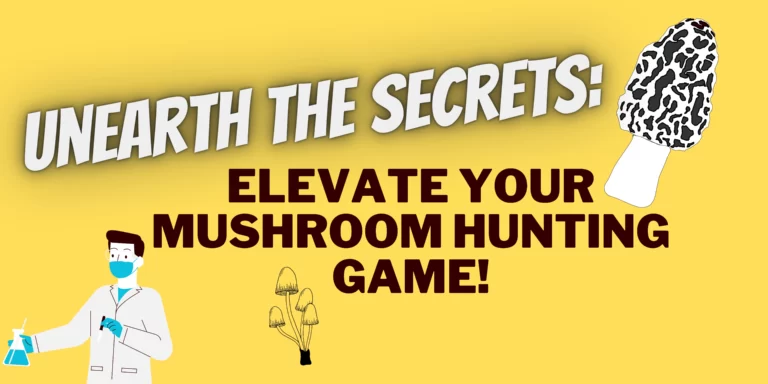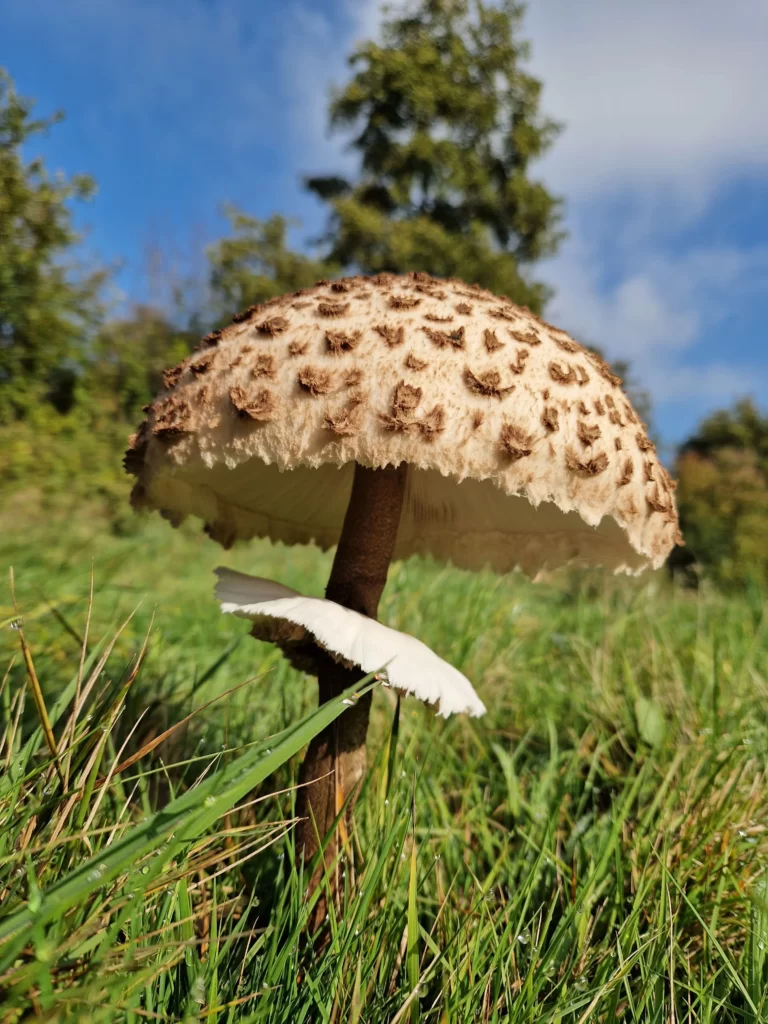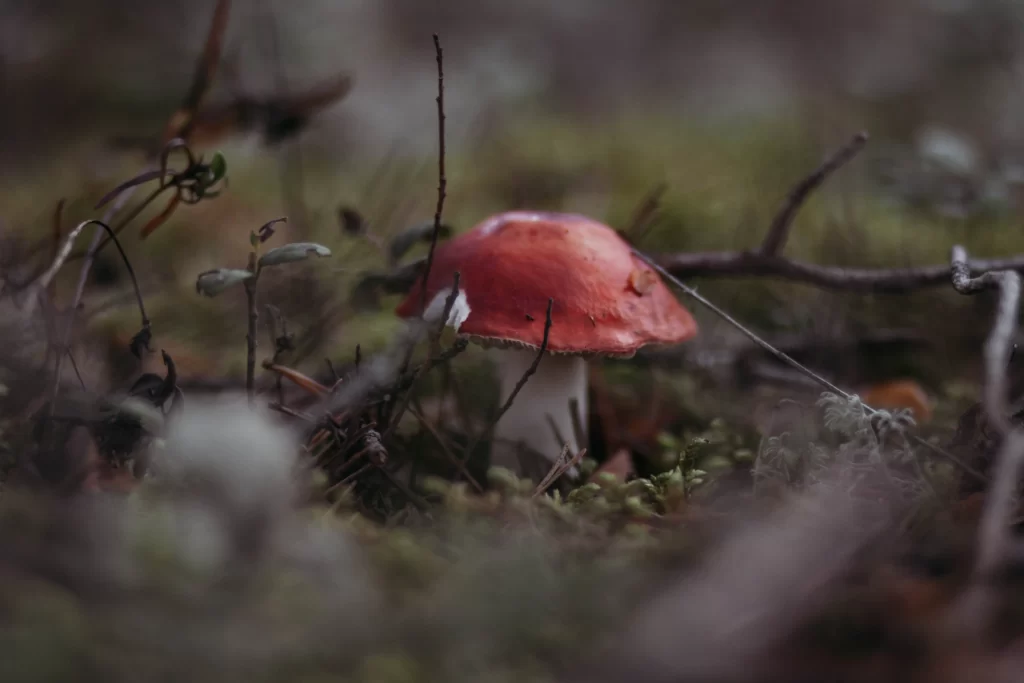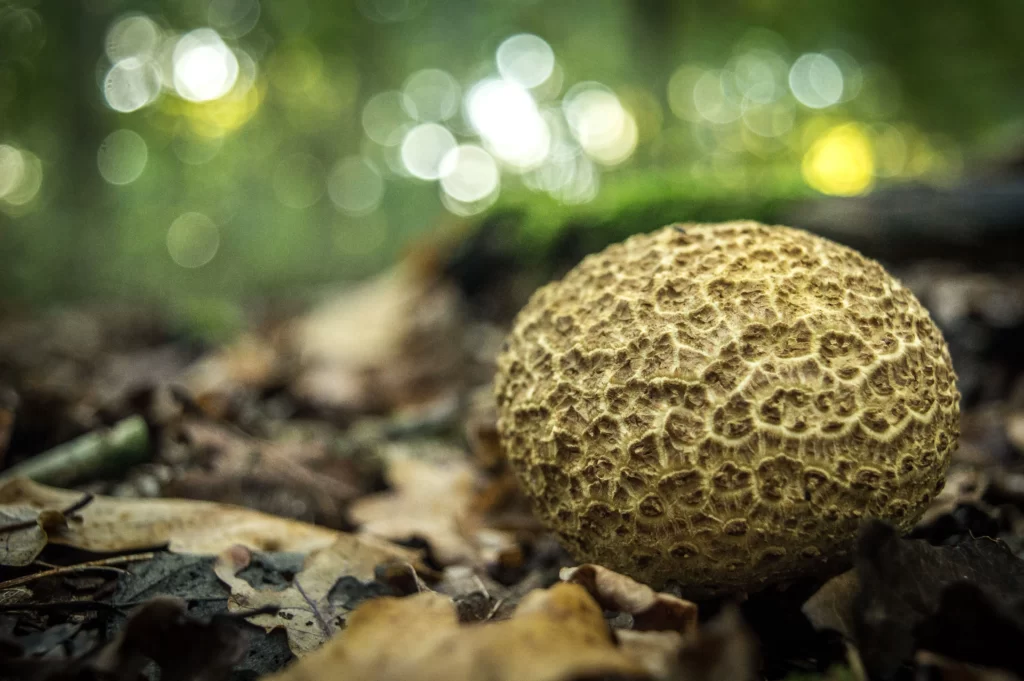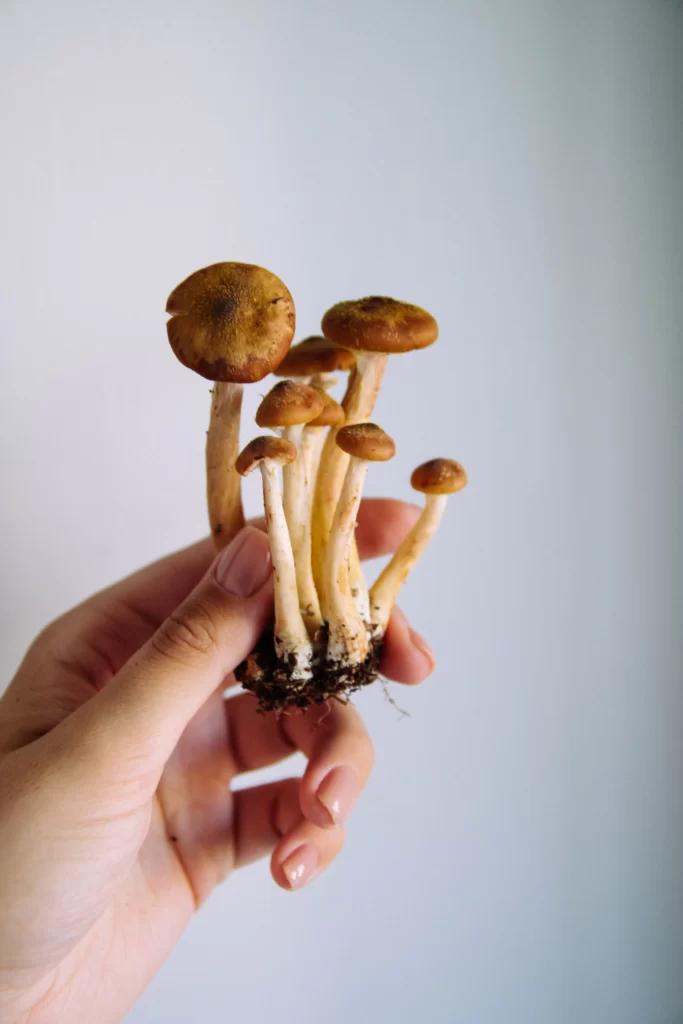Introduction
Ready to explore the fascinating world of mushrooms? Mushroom hunting is an exhilarating activity that lets you discover diverse fungal species while immersing yourself in nature. Whether you’re a novice or an experienced forager, these tips will elevate your mushroom hunting experience. Let’s begin our adventure!
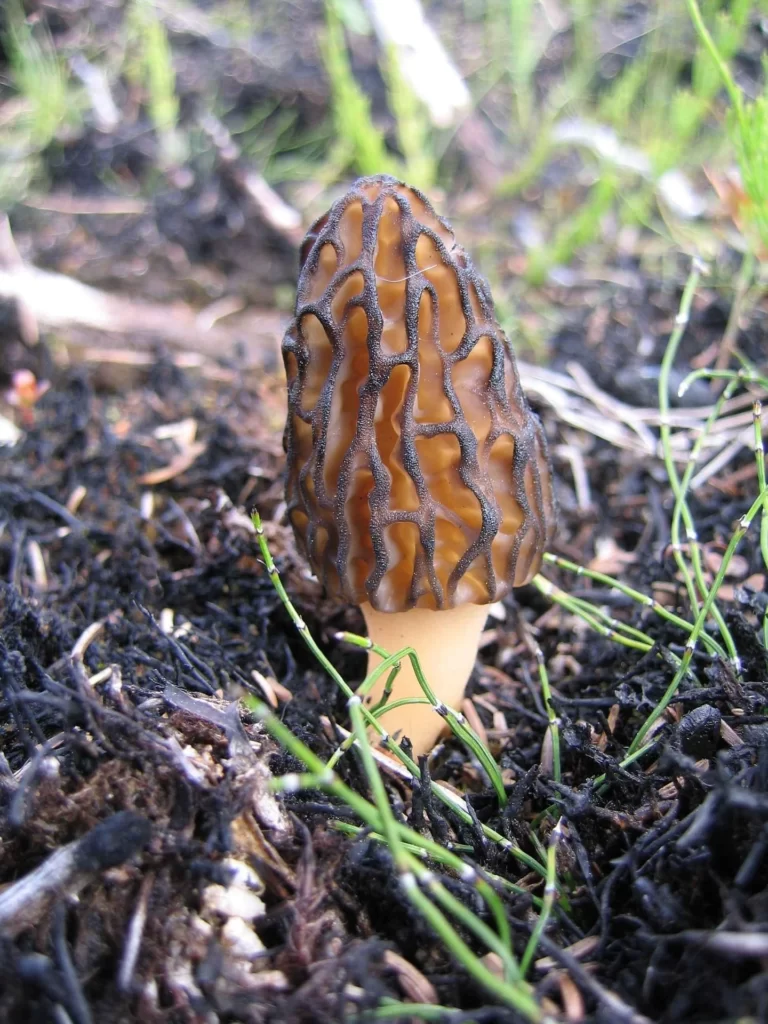
1. What is Mushroom Hunting?
Mushroom hunting, alternatively referred to as foraging or mushroom foraying, entails the exploration of natural habitats in search of wild mushrooms. This recreational pursuit captivates nature enthusiasts, food aficionados, and individuals intrigued by mycology—the scientific study of fungi.
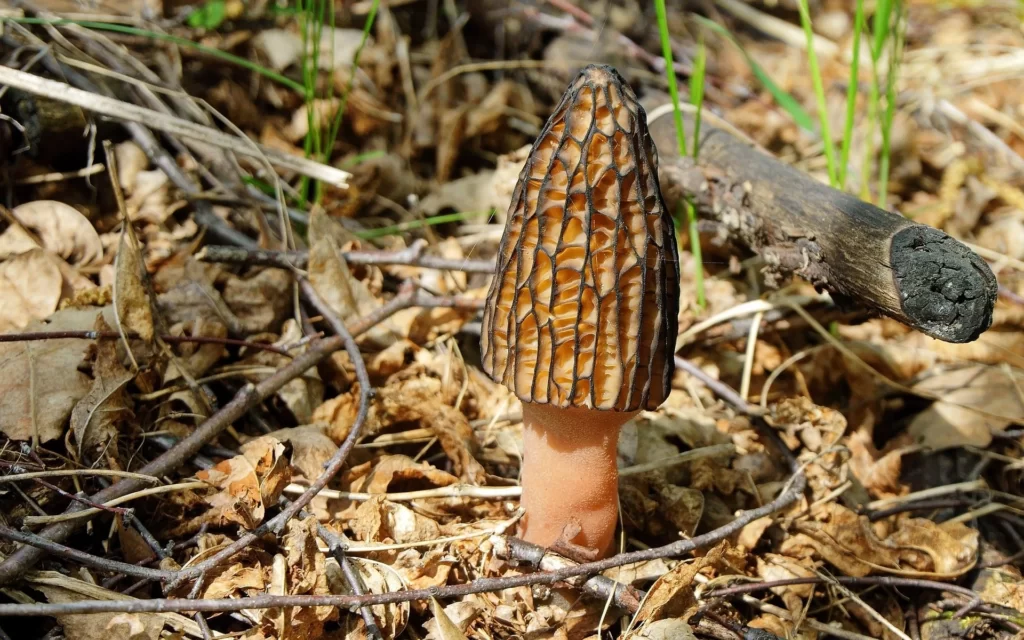
2. The Best Seasons for Mushroom Hunting
Different types of mushrooms thrive during specific seasons, with spring and fall being ideal for fruitful mushroom hunting due to favorable soil conditions and temperatures. During the spring, keep a keen eye out for morel mushrooms, while in the fall, you’ll find a diverse range of edible mushrooms to discover.

3. Essential Equipment for Mushroom Hunting
Before you begin your mushroom hunting expedition, make sure to gather essential equipment such as a durable basket or mushroom bag, a sharp knife for harvesting, a small brush for cleaning, and a field guide or smartphone app to aid in mushroom identification. Additionally, dress appropriately for the weather conditions and wear sturdy footwear suitable for trekking through forests or fields.
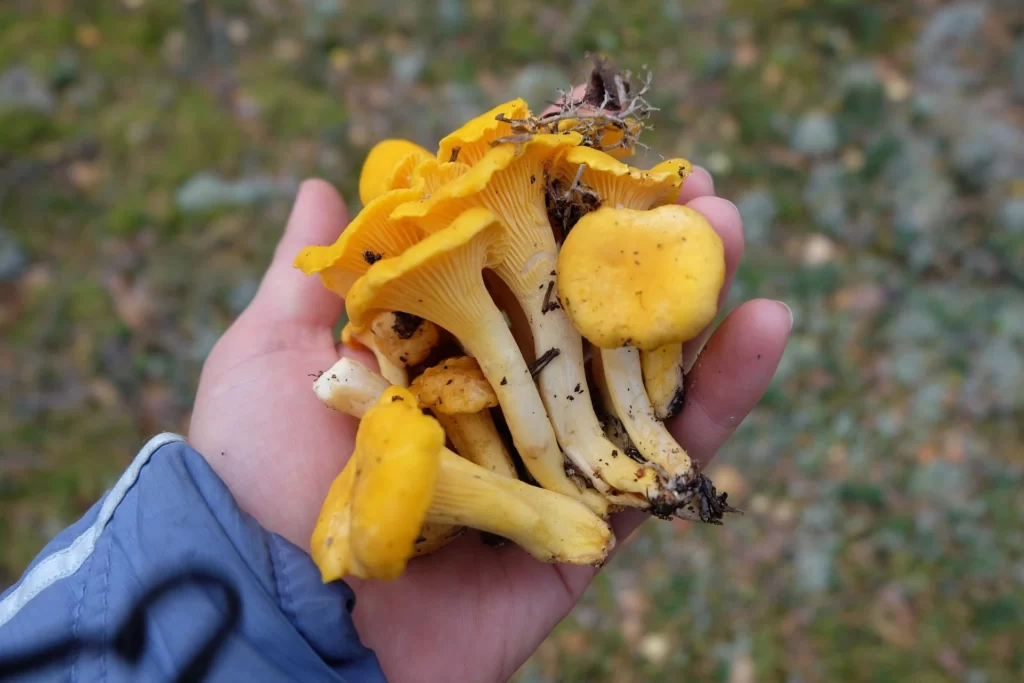
4. Choosing the Right Location
Finding the right location is crucial for a successful mushroom-hunting expedition. Look for areas with diverse vegetation, such as deciduous or mixed forests. Certain tree species, like oaks and birches, are often associated with specific mushrooms. Research local parks, nature reserves, or public lands that permit mushroom hunting.
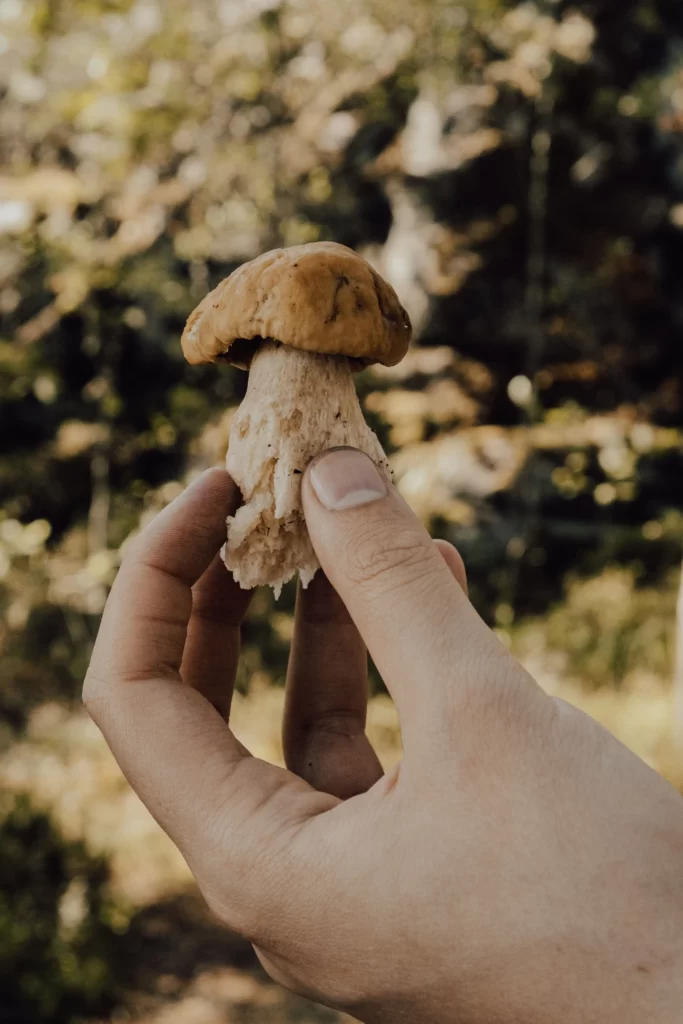
5. Identifying Edible Mushrooms
Identifying edible mushrooms accurately is vital to avoid consuming toxic species. Start by focusing on a few easily recognizable edible mushrooms, such as chanterelles, morels, or porcini. Study their distinctive features, including color, shape, gills, spore print, and scent. Always cross-reference your findings with reliable sources or consult experienced foragers.

6. Avoiding Toxic Mushrooms
Mushroom hunting comes with a responsibility to steer clear of poisonous varieties. Learn to identify toxic mushrooms and their look-alikes. Avoid consuming any mushroom without absolute certainty. When in doubt, seek guidance from experts or participate in guided mushroom walks to enhance your knowledge and safety.
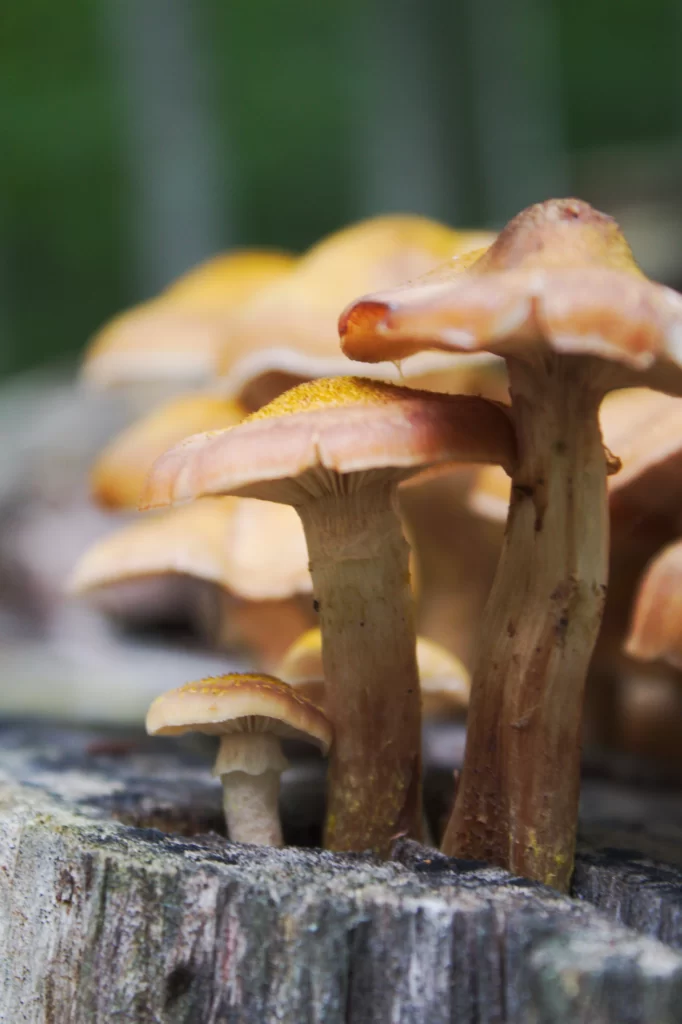
7. Mushroom Hunting Etiquette
Respect nature and practice good mushroom-hunting etiquette. Avoid damaging or disturbing the environment and only collect mushrooms that you intend to consume. Gently harvest mushrooms by cutting them close to the ground, allowing the mycelium—the underground fungal network—to remain intact for future growth.
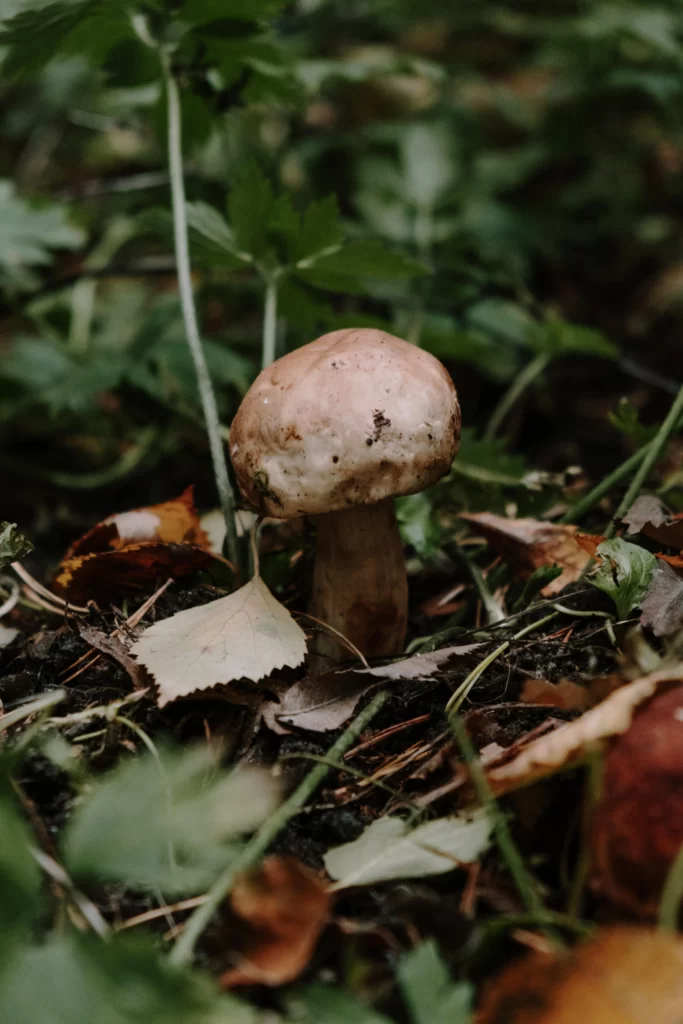
8. Techniques for Mushroom Hunting
Developing effective mushroom-hunting techniques will improve your success rate. Scan the ground carefully, looking for mushroom shapes, colors, or signs like nibbled caps or stalks. Explore different habitats, including fallen logs, mossy areas, or tree roots, hidden under leaves or debris.
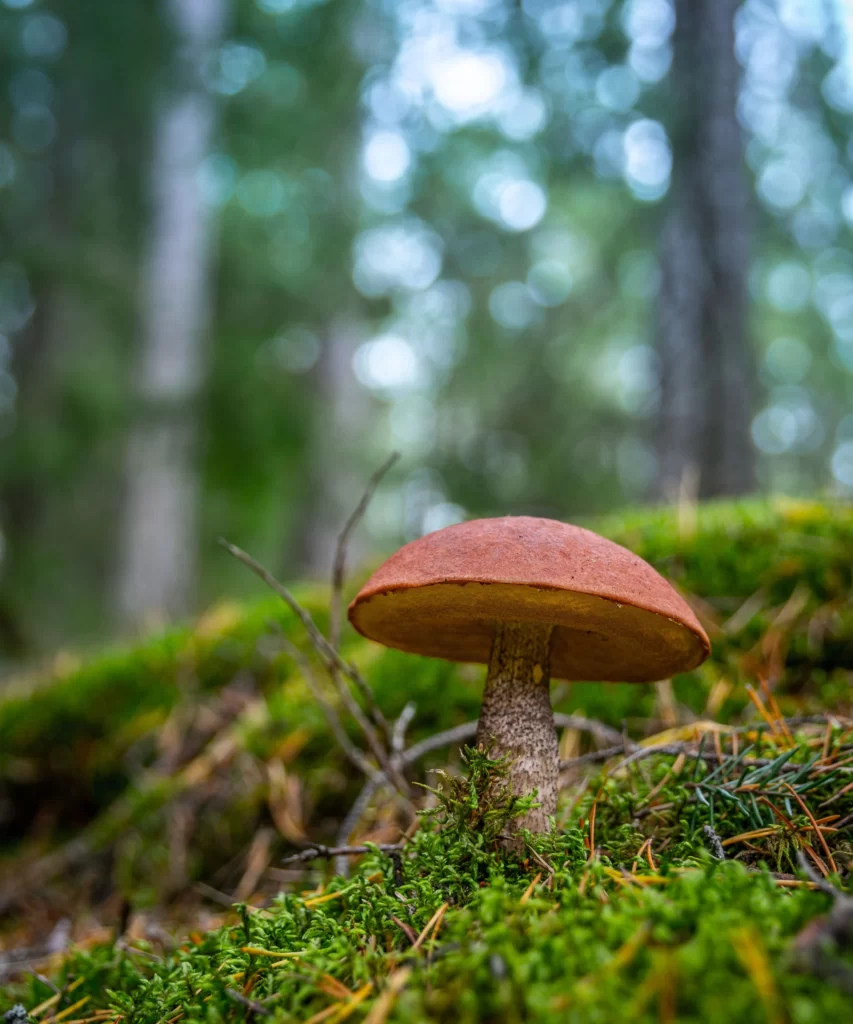
To enhance your mushroom-hunting skills, try these techniques:
- Move slowly and observe your surroundings keenly. Mushrooms can blend in with the environment, so a keen eye is necessary.
- Look for signs of mushroom growth, such as mycelium, which appears as a web-like network in the soil or on decaying wood.
- Check beneath fallen leaves or debris where mushrooms may be hiding.
- Take note of the weather conditions, as certain mushrooms prefer specific moisture levels or temperature ranges.
- Follow animal trails or paths, as animals often feed on mushrooms and can lead you to fruitful spots.
- Keep a journal or take photographs to document your finds, helping you remember successful hunting locations.
9. Preserving and Storing Mushrooms
Preserving and storing mushrooms involves drying them using methods like air-drying or a food dehydrator. The dried mushrooms can be stored in airtight containers or vacuum-sealed bags in a cool and dry place for long-term storage.
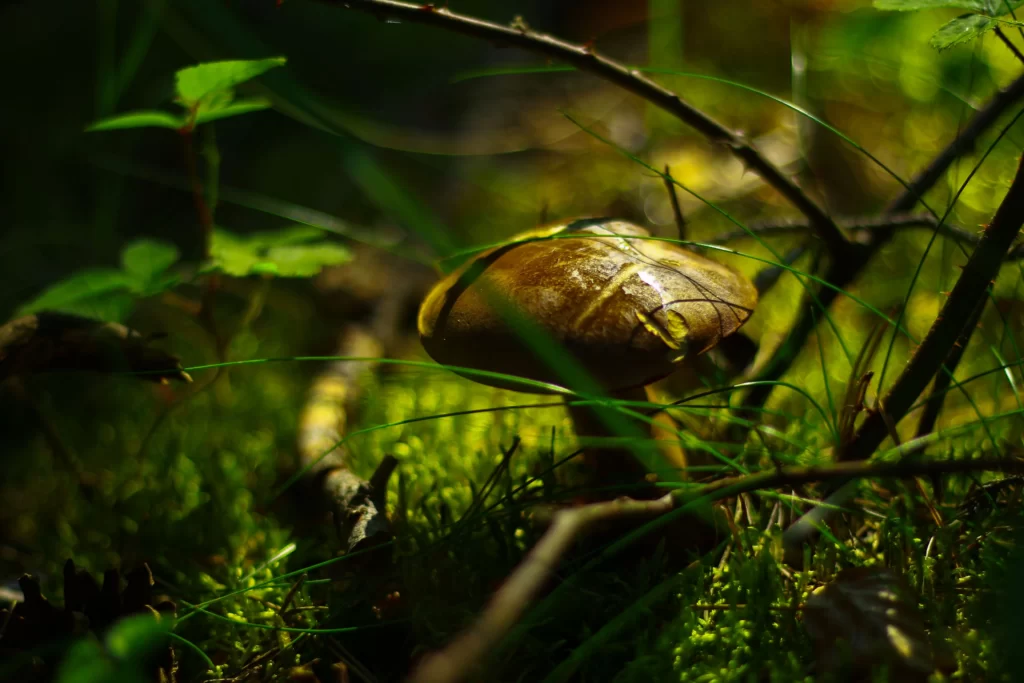
Properly preserving and storing your harvested mushrooms is essential to maintain their freshness and flavor. Follow these tips:
- Clean mushrooms gently using a brush or damp cloth to remove dirt or debris.
- Avoid soaking mushrooms in water, as they can absorb moisture and become mushy.
- For long-term storage of mushrooms, you have the option to air-dry them or use a food dehydrator. Once dried, store the mushrooms in airtight containers or vacuum-sealed bags in a cool and dry location.
- Freezing mushrooms is another option. Blanch them briefly, cool them, and pack them in freezer-safe containers or bags.
10. Cooking with Wild Mushrooms
Cooking with wild mushrooms offers a culinary adventure. It is recommended to cook them rather than consume them raw, as cooking helps break down toxins and enhances flavors. Experiment with different cooking methods such as sautéing, roasting, or incorporating them into various dishes like soups, stews, pasta, or risottos. Pair wild mushrooms with complementary flavors and ingredients to create delicious and enjoyable dishes.

One of the joys of mushroom hunting is the culinary adventure that follows. Here are some tips for cooking with wild mushrooms:
- Start with small quantities of any new mushroom species to ensure you tolerate them well.
- Avoid consuming wild mushrooms raw, as cooking helps break down toxins and enhances flavors.
- Experiment with various cooking methods, such as sautéing, roasting, or incorporating mushrooms into soups, stews, pasta dishes, or risottos.
- Pair mushrooms with complementary flavors and ingredients to create delightful dishes.
11. Mushroom Hunting Safety Tips
Safety is paramount when it comes to mushroom hunting. Educate yourself about poisonous mushrooms and their potential harm. Only consume mushrooms if you can confidently identify them. Seek medical help immediately if you experience any adverse reactions. Be mindful of wildlife, insects, and potential hazards in the surroundings while exploring forests or fields. Prioritize your safety by informing someone about your mushroom hunting plans and when you expect to return.

Safety should be a top priority while mushroom hunting. Keep these safety tips in mind:
- Educate yourself thoroughly about poisonous mushrooms and their potential effects.
- Never consume mushrooms unless you’re absolutely certain of their identification.
- If you experience any adverse reactions after consuming a mushroom, seek medical attention immediately.
- Be cautious of wildlife, insects, or hazards in the environment while navigating through forests or fields.
- Inform someone about your mushroom hunting plans and expected return time.
12. Joining Mushroom Hunting Groups or Clubs
Joining mushroom-hunting groups or clubs can be highly beneficial. It provides opportunities to learn from experienced foragers and participate in group forays or organized mushroom walks. You can share experiences, ask questions, and gain knowledge about local mushroom species. Additionally, it allows you to connect with like-minded individuals who share your passion for mushrooms. Workshops, lectures, and mushroom-related events are often organized, further enhancing your skills and enjoyment of mushroom hunting.
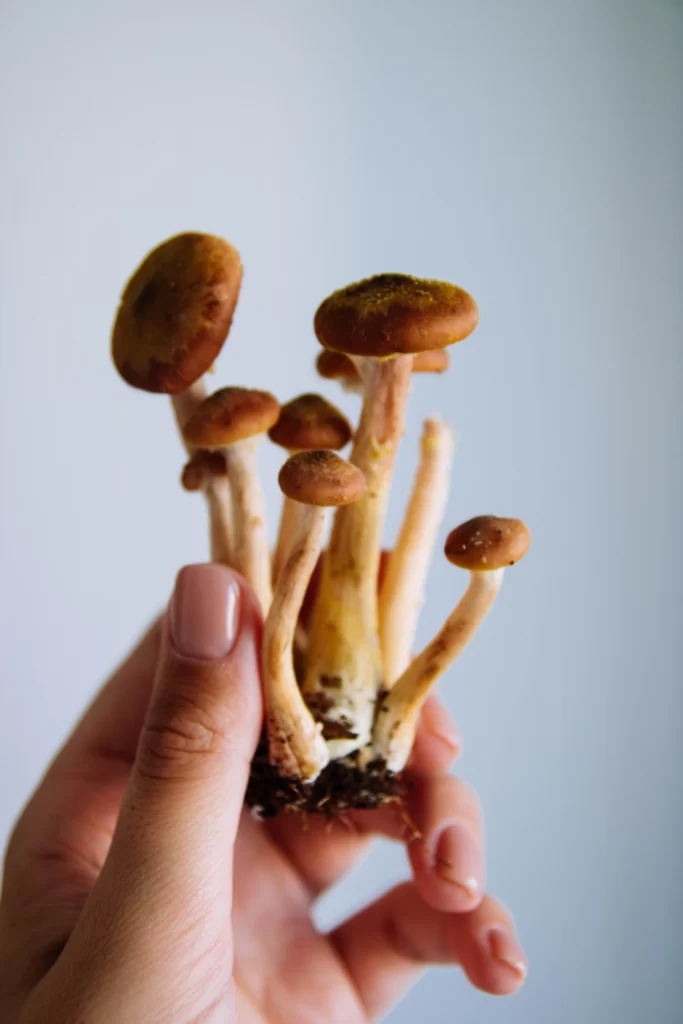
Joining mushroom hunting groups or clubs can provide valuable insights and opportunities for learning from experienced foragers. Benefits of joining include:
- Access to group forays or organized mushroom walks led by knowledgeable individuals.
- Opportunities to share experiences, ask questions, and learn about local mushroom species.
- Building connections with like-minded individuals who share your passion for mushrooms.
- Participating in workshops, lectures, or mushroom-related events.
13. Resources for Mushroom Identification
Having reliable resources for mushroom identification is essential for any mushroom hunter. Consider using field guides specific to your region or country, as they provide detailed descriptions and photographs of different mushroom species. Smartphone apps dedicated to mushroom identification can also be helpful, offering features like photo recognition or expert forums. Online forums or communities allow you to share photos and descriptions for identification assistance. Additionally, local mycological societies or botanical gardens often offer educational programs and resources for mushroom identification. These resources will aid you in accurately identifying mushrooms and expanding your knowledge in the field.

Having reliable resources for mushroom identification is essential for any mushroom hunter. Consider these resources:
- Field guides specific to your region or country, which provide detailed descriptions and photographs.
- Smartphone apps dedicated to mushroom identification, often include features like photo recognition or expert forums.
- Online forums or communities where you can share photos and descriptions for identification assistance.
- Local mycological societies or botanical gardens that offer educational programs and resources.
Conclusion
Embarking on a mushroom-hunting adventure can be both exciting and rewarding. By following these tips, you’ll enhance your skills in identifying, harvesting, preserving, and cooking wild mushrooms. Remember to prioritize safety, respect nature, and continue learning from experienced foragers. Happy hunting!
FAQs (Frequently Asked Questions)
Q: Can I eat any mushrooms I find while mushroom hunting?
A: It is essential to exercise caution when consuming mushrooms found during mushroom hunting. Not all mushrooms are safe to eat, as many species can be toxic or even deadly. Accurately identifying mushrooms before consumption is crucial. Consult reliable resources, experts, or experienced foragers to ensure you select edible species and avoid potential health risks.

Q: What steps should I follow if I unintentionally ingest a toxic mushroom?
In case of consuming a poisonous mushroom, it is crucial to promptly seek medical assistance. Contact your local poison control center or visit the nearest emergency room without any delay. Acting swiftly is vital since certain toxic mushrooms can cause severe symptoms and pose life-threatening risks.

Q: Are there any specific rules or permits required for mushroom hunting?
A: Rules and regulations for mushroom hunting vary depending on the location. Before heading out, check local laws and regulations regarding foraging and mushroom hunting. Some areas may require permits or have specific restrictions to protect natural habitats or sensitive ecosystems.
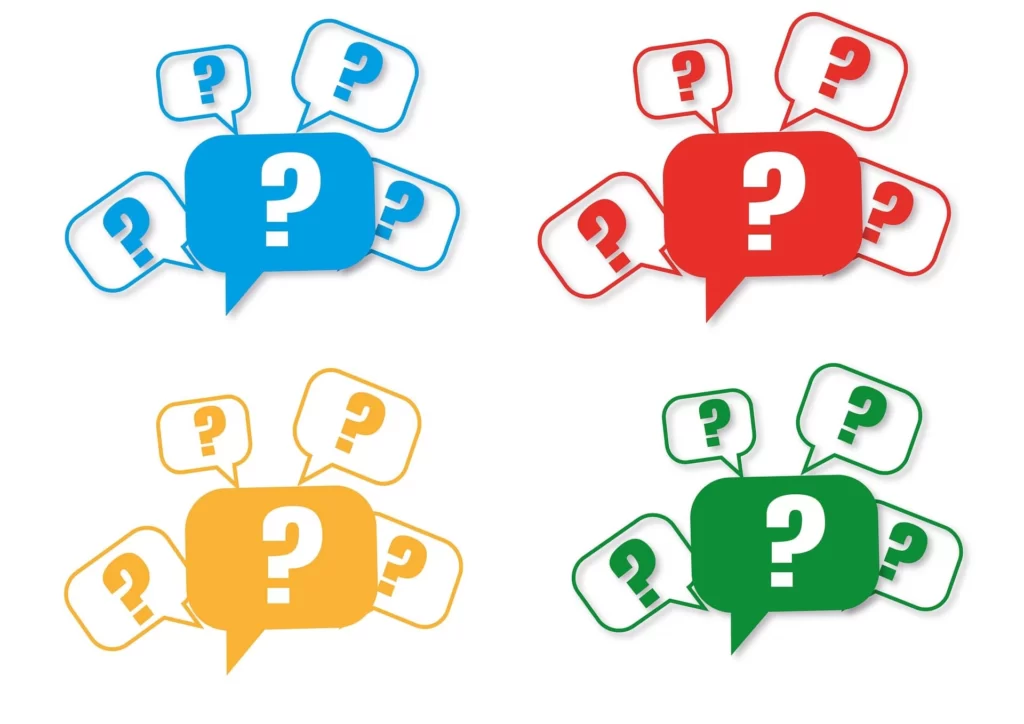
Q: How can I contribute to the preservation of mushroom habitats?
A: To contribute to the preservation of mushroom habitats, follow these guidelines:
- Avoid over-harvesting. Only collect mushrooms you intend to consume, leaving the rest to support the ecosystem.
- Be mindful of the environment while foraging. Minimize trampling on vegetation and avoid damaging trees or other plants.
- Respect private property and obtain permission before entering private lands.
- Participate in conservation efforts by joining local environmental organizations or volunteering for habitat restoration projects.

Q: Can I sell mushrooms that I collect while mushroom hunting?
A: Selling wild mushrooms is subject to regulations and permits in many areas. Selling mushrooms without proper licenses or certifications may be illegal. Before considering selling mushrooms, familiarize yourself with the local laws and requirements governing the sale of wild-harvested mushrooms.

